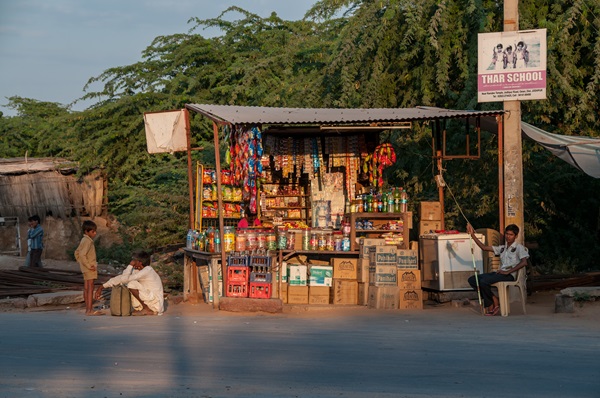.png)

Krishnadevan is Consulting Editor at BasisPoint Insight. He has worked in the equity markets, and been a journalist at ET, AFX News, Reuters TV and Cogencis.
June 14, 2025 at 6:56 AM IST
The FMCG sector in India is undergoing a transformation that is both rapid and far-reaching. After being subdued for several quarters, rural demand is surging back. This turnaround is powered by a combination of tax cuts, lower interest rates, a promising monsoon forecast, and increased government spending. But there are subtle changes in both consumption patterns and delivery mechanisms. Nimble companies are taking the lead while legacy giants struggle to adjust their pace.
If the March quarter was about resilience and recalibration, the quarters ahead will be about reading signals early. The regulatory environment is also shifting. Stricter food labelling norms, sustainability mandates, and the acceleration of digital transformation are all at play.
Changing Dynamics
The sector’s fundamentals are being tested on multiple fronts. Inflation, evolving consumer preferences, and new distribution models are all shaking up traditional strategy. Growth and profitability now depend on how well companies can tap into rural demand, flex their pricing power, and stay nimble with their delivery channels.
What stands out in this environment is the rise of small, local, and unbranded players. These companies have capitalised on rural momentum and shifting market dynamics. They are outpacing larger, more established brands whose volume growth has slowed to a crawl.
Rural India’s comeback has caught many legacy brands off guard. Local and regional players, often dismissed as fringe, are gaining the upper hand. They offer smaller pack sizes, sharper price points, and products that resonate with local preferences. Their lean cost structures and nimble distribution give them a clear edge.
National brands are still wrestling with slow-moving supply chains and one-size-fits-all strategies. While the big players are busy reworking their rural game plans, the upstarts, and in some cases, start-ups, have already moved in and are grabbing market share.
The most striking feature of today’s market is the growing gap between rural and urban segments. Rural India has become the engine of growth. Marico’s recent performance is a case in point. The company clocked a solid 7% volume growth last quarter, thanks to its deep rural reach and trusted brands.
In contrast, urban markets are showing signs of fatigue. Companies like Hindustan Unilever are feeling the pinch. Urban consumers are trading down to smaller, cheaper packs. Brands with strong rural networks—such as Dabur, with its ayurvedic product range—are better insulated from this pressure. Companies focused on urban markets are seeing their growth slow.
Channel Wars
Distribution models are also being rewritten. General trade, the traditional channel for FMCG sales, barely grew at 2%. Modern trade and e-commerce sprinted ahead at 12%. Legacy companies like Colgate, still heavily reliant on general trade, are losing ground to those embracing organised retail and digital channels. Britannia’s push into AI-driven distribution and Tata Consumer’s direct-to-consumer moves exemplify the changes needed to stay ahead.
The role of general trade is at a crossroads. While it still accounts for a significant majority of FMCG sales, its growth has slowed dramatically. Kirana stores remain vital, especially in rural and semi-urban areas. They are increasingly challenged by modern trade and quick commerce platforms that offer better experiences, wider assortments, and faster service. The limitations of general trade are becoming more apparent. Limited shelf space, working capital constraints, high salesforce attrition, and inventory pile-ups are all putting pressure on this channel.
Companies that continue to rely heavily on general trade must reposition quickly. They need to reimagine their sales coverage. Leveraging technology for order collection and inventory management is now essential. Increasing the frequency and quality of store visits by company officials is also crucial. Digital enablement is no longer optional; it is essential for survival. Direct distribution models, data-driven campaigns, and expanding product reach through adjacencies and premium lines can help companies regain momentum.
The future of FMCG distribution in India is omnichannel. General trade will remain important, but its share will shrink as modern trade and quick commerce gain ground. The brands that succeed will be those that move decisively, invest in technology, and improve the pace and quality of their sales coverage.




